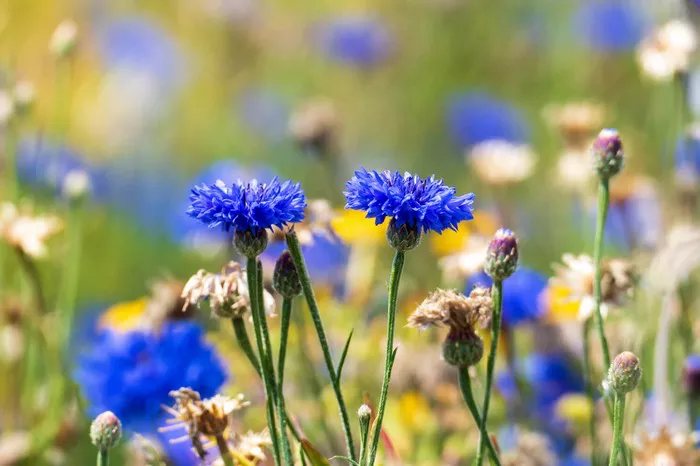Dragonflies are beautiful insects that are often seen flying over ponds, lakes, and other bodies of water. These insects are beneficial to gardens and landscapes as they help control the population of mosquitoes and other harmful insects. Attracting dragonflies to your garden can be done by planting specific flowers that they are attracted to.
Why Dragonflies are Important in the Garden
Dragonflies are beneficial insects that play a vital role in controlling the population of harmful insects such as mosquitoes, flies, and gnats. They are also an important part of the food chain for birds, fish, and other wildlife. By attracting dragonflies to your garden, you can create a natural pest control system that helps keep your plants healthy and thriving.
Flowers that Attract Dragonflies
Dragonflies are attracted to flowers that have bright colors, are fragrant, and have a landing area where they can rest. Below are some flowers that are known to attract dragonflies:
Black-eyed Susan (Rudbeckia hirta)
Black-eyed Susan is a native wildflower that produces bright yellow and orange flowers with dark centers. It blooms from mid-summer until fall, providing a long season of nectar for dragonflies and other pollinators. Black-eyed Susan can grow up to three feet tall and prefers full sun and well-drained soil.
Joe-Pye Weed (Eutrochium purpureum)
Joe-Pye weed is a tall perennial plant that produces pink or purple flowers in late summer. It can grow up to six feet tall and prefers moist soil. The flowers of Joe-Pye weed are highly attractive to dragonflies and other pollinators.
Swamp Milkweed (Asclepias incarnata)
Swamp milkweed is a native wildflower that grows in wetlands and damp soils. It produces clusters of pink or white flowers that are highly attractive to dragonflies, butterflies, and bees. Swamp milkweed can grow up to four feet tall and blooms from mid-summer until fall.
Goldenrod (Solidago spp.)
Goldenrod is a native wildflower that produces tall spikes of yellow flowers in late summer and fall. It can grow up to five feet tall and prefers full sun and well-drained soil. The flowers of goldenrod are highly attractive to dragonflies and other pollinators.
Cardinal Flower (Lobelia cardinalis)
Cardinal flower is a native perennial that produces bright red flowers that bloom from mid-summer until fall. It can grow up to three feet tall and prefers moist soil. The flowers of cardinal flower are highly attractive to dragonflies and hummingbirds.
Creating a Dragonfly Habitat
In addition to planting flowers that dragonflies are attracted to, creating a suitable habitat for them is essential. Dragonflies require a clean, freshwater source for breeding and aquatic plants for hiding and perching. Below are some tips for creating a dragonfly-friendly habitat:
Provide a Water Source
Dragonflies require a clean, freshwater source for breeding and hunting. You can create a small pond or water feature in your garden to provide a suitable habitat for dragonflies. Make sure the water is not stagnant and has a variety of depths to accommodate different species of dragonflies.
Plant Aquatic Plants
Aquatic plants such as water lilies, water hyacinth, and cattails provide hiding places and perches for dragonflies. Plant a variety of aquatic plants in and around your pond to create a diverse and suitable habitat for dragonflies.
Create a Sunny Location
Dragonflies prefer sunny locations with open areas for hunting and perching. Clear any dense vegetation or shading structures around your pond or water feature to allow for plenty of sunlight exposure.
Conclusion
Attracting dragonflies to your garden can provide many benefits, including natural pest control and the joy of watching these beautiful insects. Flowers such as black-eyed Susan, Joe-Pye weed, swamp milkweed, goldenrod, and cardinal flower are highly attractive to dragonflies due to their bright colors, fragrance, and landing areas. Creating a suitable habitat for dragonflies with a clean, freshwater source and aquatic plants can enhance their presence in your garden. By incorporating these elements into your landscape, you can create a dragonfly-friendly environment that benefits both you and these beneficial insects.


